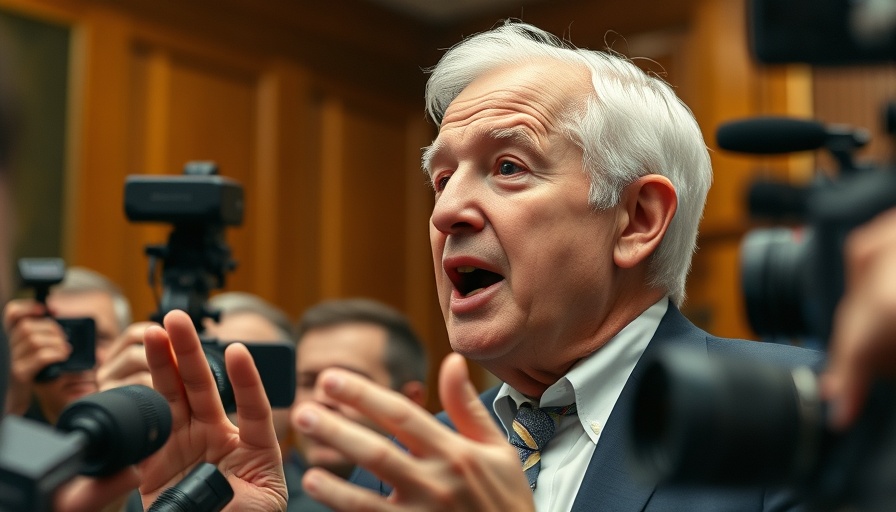
Automation's Ominous Path: The Future of Work
As artificial intelligence (AI) evolves and takes center stage in discussions about the workforce, prominent voices like Senator Bernie Sanders are bringing much-needed attention to the pivotal issues surrounding job security. During a recent CNN town hall, Sanders didn't hold back in criticizing Elon Musk for what he described as reckless approaches to job cuts within federal agencies. With Musk figuratively wielding a chainsaw at government jobs, Sanders raised a chilling question: if federal workers are facing such stark consequences, what will happen when automation begins affecting private sector jobs as well?
The Stakes Are High: Who Will Be Affected?
Sanders emphasized that the implications extend far beyond federal agencies. "If Musk can do this to federal employees, some of whom are in unions… what do you think he's going to do when artificial intelligence and robotics come for your job?" His statement resonates with anyone whose livelihood could be impacted by the advancement of technology. The looming fear is that if major employers can let go of employees supposedly at the ‘top of their game,’ what leaves the average worker safe?
Understanding the AI Job Cuts Trend
Job displacement due to AI is not a distant concern; it's rapidly becoming a reality. An Ernst & Young report suggested that up to 30% of jobs could be automated by the mid-2030s, drastically reshaping career landscapes. The sectors most vulnerable include manufacturing, transportation, and even white-collar professions. With the rapid rise of automation, everyday workers must prepare for potential job loss.
Connections and Community: The Human Element
In the face of potential AI job loss, grassroots organizations are stepping up to create networks of support for affected workers. Local initiatives are emerging to connect individuals with training and resources to help them adapt. Whether it’s through reskilling programs or entrepreneurial workshops, communities can act as a safety net, showcasing the strength of unity as people navigate the trials of a technology-driven economy.
Counterarguments: Embracing Change
While many fear layoffs linked to technological advancements, others argue that AI could create ample job opportunities in new sectors. Some experts posit that history has shown technological shifts often lead to the creation of new job categories, similar to how the advent of computers transformed many traditional roles. However, the transition can be challenging, and without proper planning, many may find themselves left behind.
Looking Forward: What’s Next?
As companies evaluate the cost-effectiveness of their operations, the historical precedent of job cuts due to automation suggests more upheaval lies ahead. Sanders’ warnings may serve as a rallying call, urging both employees and policymakers to proactively address the realities of AI integration and its accompanying challenges.
Transforming fear into action is crucial. Workers should be encouraged to participate in discussions about technology's role in the workplace, advocating for regulations that protect employment opportunities. Creating laws that ensure AI advancements benefit all rather than a handful of executives will be essential to maintaining economic balance.
As we dive into this AI-dominated future, amid concerns about layoffs and job loss, it’s crucial to preserve the human element in employment decisions. By prioritizing social responsibility, we may navigate these changes without sacrificing the dignity and livelihood of our workforce.
While the world awaits the outcomes of ongoing debates about technology's role and control, now is the time for workers and communities to unite, safeguard their interests, and chart a sustainable future.
 Add Row
Add Row  Add
Add 




 Add Row
Add Row  Add
Add 

Write A Comment